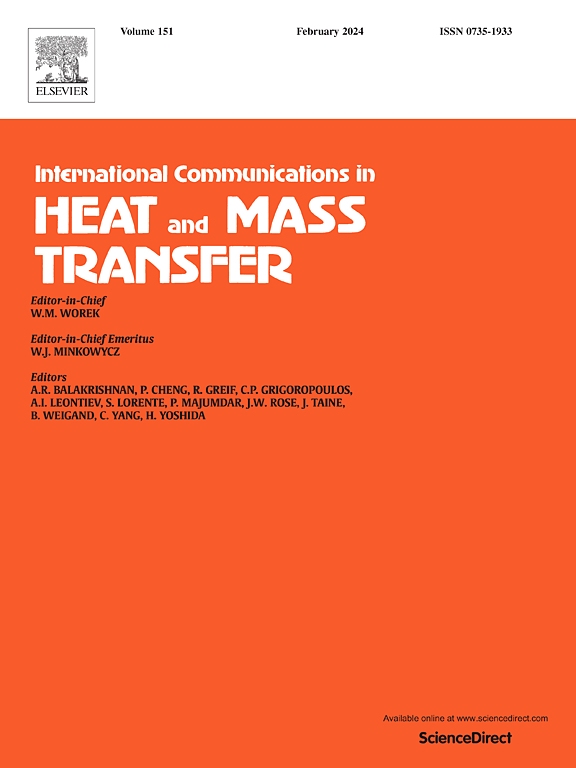Output temperature estimation of the gas flow temperature control system based on artificial neural network
IF 6.4
2区 工程技术
Q1 MECHANICS
International Communications in Heat and Mass Transfer
Pub Date : 2025-04-03
DOI:10.1016/j.icheatmasstransfer.2025.108917
引用次数: 0
Abstract
Due to the strong nonlinearity, and the difficulty to establish the analytical models for plasma heaters and mixing chambers, the performance of the gas flow temperature control system is severely restricted. To address this issue, three artificial neural network methods were used to estimate the output of the system. Simulation and experimental results indicate that, compared to the simulation models based on mathematical models and the system output estimation models based on feedforward neural networks, both time-delay neural network and nonlinear autoregressive with exogenous input neural network can improve the accuracy of output estimation. The nonlinear autoregressive with exogenous input neural network reduced the average system output estimation error to 0.099 K, significantly enhancing the accuracy of the estimated output for the real system. For output estimation in time varying systems, incorporating time delays to account for historical data can improve the estimation accuracy of neural networks. Furthermore, in systems where the output can be dynamically collected, adding output feedback can further enhance the estimation accuracy. This is crucial for improving the control accuracy of the gas flow temperature control system and is also insightful for output estimation in similar time-varying control systems
求助全文
约1分钟内获得全文
求助全文
来源期刊
CiteScore
11.00
自引率
10.00%
发文量
648
审稿时长
32 days
期刊介绍:
International Communications in Heat and Mass Transfer serves as a world forum for the rapid dissemination of new ideas, new measurement techniques, preliminary findings of ongoing investigations, discussions, and criticisms in the field of heat and mass transfer. Two types of manuscript will be considered for publication: communications (short reports of new work or discussions of work which has already been published) and summaries (abstracts of reports, theses or manuscripts which are too long for publication in full). Together with its companion publication, International Journal of Heat and Mass Transfer, with which it shares the same Board of Editors, this journal is read by research workers and engineers throughout the world.

 求助内容:
求助内容: 应助结果提醒方式:
应助结果提醒方式:


